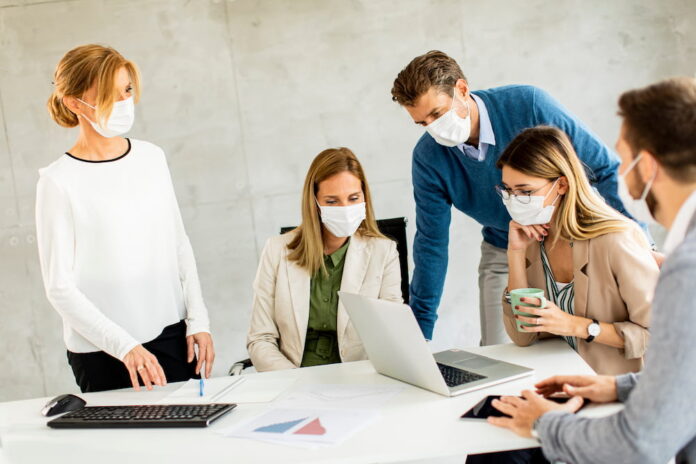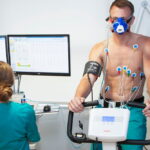Infection prevention remains an essential aspect of healthcare, especially in a world increasingly mindful of the impacts of infectious diseases. Implementing comprehensive and effective strategies within healthcare facilities can significantly reduce the risk of healthcare-associated infections (HAIs), improving patient safety and health outcomes. This article aims to guide healthcare professionals in creating a robust infection prevention plan.
Understanding The Need For Infection Prevention
The first step toward designing an effective prevention plan is understanding the pressing need for it. Commercial disinfectant cleaning services can reduce HAIs, a leading cause of patient morbidity and mortality. HAIs can lead to longer hospital stays, increased healthcare costs, and decreased patient satisfaction. By adopting a rigorous approach to infection prevention, facilities can enhance patient safety, lower costs, and improve overall healthcare delivery.
Establishing An Infection Prevention Committee
With a firm grasp on the necessity of infection prevention, the next step is establishing a dedicated committee. This committee should be multidisciplinary, with representatives from various departments, including nursing, pharmacy, environmental services, and infection control. It will develop, implement, and oversee the infection prevention plan.
Developing The Infection Prevention Plan
Now, you’re ready to craft your plan. It should be comprehensive and should cover the following key areas:
1- Hand Hygiene
Hand hygiene is a critical component of an infection prevention plan. Communicating guidelines on when and how to practice hand hygiene is essential. Ensure that hand hygiene stations equipped with soap and water or alcohol-based hand sanitizers are conveniently located throughout the facility.
By consistently practicing proper hand hygiene, including thorough handwashing and the use of hand sanitizers, you can greatly reduce the transmission of pathogens and minimize the risk of infections spreading within the healthcare facility.
2- Personal Protective Equipment (PPE)
Personal Protective Equipment (PPE) is essential in preventing the transmission of infectious agents within healthcare facilities. Your infection prevention plan should provide detailed guidelines on properly using, removing and disposing of PPE. It is crucial to train staff on proper PPE protocols to minimize the risk of contamination.
Additionally, establish protocols for monitoring and ensuring a consistent supply of PPE to ensure that healthcare workers have the necessary protection at all times. By implementing these measures, you can safeguard staff and patients from spreading infections.
3- Environmental Cleaning And Disinfection
Effective environmental cleaning and disinfection are crucial in reducing the risk of infection transmission within healthcare facilities. Regular cleaning should prioritize high-touch surfaces, such as doorknobs, handrails, and medical equipment.
Consider partnering with commercial disinfectant cleaning services to ensure thorough and efficient cleaning. These professionals should adhere to all regulatory standards and utilize EPA-registered disinfectants. By working with experts in commercial disinfectant cleaning services, you can maintain a clean and safe environment for patients, staff, and visitors.
4- Education And Training
Education and training are essential for ensuring staff members have the knowledge and skills to effectively implement the infection prevention plan. Regular training sessions should cover all aspects of the prevention plan, including proper hand hygiene, correct use of personal protective equipment, and thorough cleaning and disinfection practices.
Ongoing education on infection prevention best practices will help staff stay updated on the latest guidelines and strategies. Investing in education and training can empower your staff to effectively prevent the spread of infections and maintain a safe healthcare environment.
5- Surveillance And Reporting
Surveillance and reporting play a crucial role in determining the effectiveness of infection prevention measures and identifying areas for improvement. Your prevention plan should establish a system for routine monitoring of infection rates, including tracking trends over time. Any changes in infection rates should be promptly reported to healthcare personnel so that they can be addressed and mitigated.
By establishing a comprehensive system for surveillance and reporting, you can make data-driven decisions to improve infection prevention strategies and ensure a safe healthcare environment for patients and staff.
Implementing The Infection Prevention Plan
Having a robust plan in place isn’t enough. You need to ensure it’s properly implemented. Ensure all staff are aware of the plan and trained on their responsibilities. It’s also crucial to have a system to monitor compliance and address gaps.
Reviewing And Improving The Infection Prevention Plan
Finally, don’t forget that an effective infection prevention plan is dynamic. You should regularly review and adjust your plan to accommodate new scientific knowledge, emerging pathogens, and changing circumstances within your facility.
Conclusion
Creating a comprehensive infection prevention plan for healthcare facilities involves understanding the need for such a plan, establishing a dedicated committee, developing a detailed plan, implementing it effectively, and regularly reviewing and improving it. By doing so, healthcare facilities can significantly reduce the risk of HAIs, enhancing patient safety and improving health outcomes.
Read Also
- How to Find a 5-Star Dentist Near YouChoosing a dentist is more than just finding someone who can clean your teeth. It’s about selecting a trusted partner in your long-term oral health. A 5-star dentist not only provides excellent clinical care but also delivers a positive patient experience, from the moment you walk in until the moment you leave. Whether you’re new… Read more: How to Find a 5-Star Dentist Near You
- Your Easy-Peasy Guide to Brewing Amazing MatchaHey there! So, you’ve heard all the buzz about matcha – that vibrant green powder that’s not just pretty but packed with good stuff? It can seem a little fancy and intimidating at first, but trust me, making a delicious cup at home is simpler than you think. Forget complicated ceremonies for now; let’s just… Read more: Your Easy-Peasy Guide to Brewing Amazing Matcha
- Embracing Holistic Wellness: Insights from a Lansing, MI Health CenterReframing Health: Moving Beyond Symptom Management Treating only symptoms often offers quick relief, yet long-term results stay out of reach. When care zeroes in on isolated complaints, the bigger picture, such as stress, behavior, or lifestyle, often gets missed. Research shows that whole-person care, which looks at physical, emotional, and environmental factors, yields better outcomes… Read more: Embracing Holistic Wellness: Insights from a Lansing, MI Health Center
- VO₂ Max Testing Explained: What It Is & Why It Matters for Your HealthVO₂ max sounds like a term reserved for elite athletes, but it’s among the most accurate measures of your lifetime and general condition. Moreover, it goes beyond performance. Monitoring your VO₂ max will help you to ascertain your body’s capacity to control stress, its oxygen consumption efficiency, and your internal ageing process. If you have… Read more: VO₂ Max Testing Explained: What It Is & Why It Matters for Your Health
- So, what exactly is matcha?Think of matcha as green tea turned up to eleven! Instead of steeping leaves and tossing them out, matcha is made by grinding whole green tea leaves into this super-fine, vibrant green powder. You whisk it right into hot water (or milk!), meaning you’re drinking the entire leaf. That’s why folks say you get way… Read more: So, what exactly is matcha?
- How to Tell When It’s Time for Professional Senior Care SupportCaring for an aging loved one is a journey filled with love, patience, and difficult decisions. One of the toughest choices families face is knowing when it’s time to seek extra help. In this article, trusted Los Angeles caregivers for seniors explore the signs that it might be time to bring in professional support, not… Read more: How to Tell When It’s Time for Professional Senior Care Support







